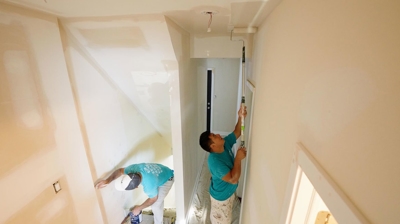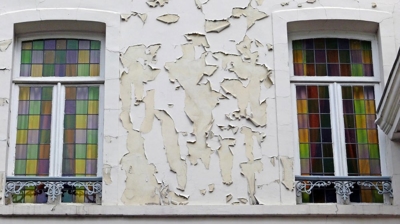Maximizing Deck Durability: How Often to Stain a Deck Explained
A wooden deck adds considerable value to a home by creating a delightful outdoor living space for entertaining guests or unwinding after a long day. However, homeowners should prioritize regular deck maintenance to ensure it stays safe and retains its visual appeal. Discover how deck stainer professionals often stain a deck to keep it in tip-top condition.
Ideal Season for Deck Staining
Expert deck stainers consider several factors to determine whether the entire deck is ready for staining. Spring and summer are not the best times to stain a deck. The wood retains excess moisture during early spring, which can cause the paint to peel or crack.
Painters usually wait until the wood dries up so the treatment can fully penetrate the wood pores. This approach helps avert potential issues and guarantees a durable finish.
During the summer, elevated temperatures might lead to the stain evaporating before it seeps into the wood. Also, direct sun exposure might create streaks and blemishes, compromising the quality of the staining job.
Whenever the forecast predicts partly sunny skies and warm weather, it is a good time to stain the deck. Checking weather conditions ensures optimal results and a resilient finish. Unpredictable climates might make this process somewhat challenging.
The size of the deck impacts the project’s duration. Large decks are more time-consuming to stain than small ones. Deck staining professionals typically spend one to two days planning for average-size decks. If it requires a power washer, they may need an extra day to pressure wash the entire patio. Bigger-than-average projects may need an even wider window of good weather.
Careful planning will avoid bad weather and increase the chances of successful completion of a deck staining project that will last for years.
Deck Wood Type
For homeowners with high-quality, beautiful wood decks, a transparent deck stain will highlight the wood’s natural patterns and enhance its beauty. A solid stained color will conceal discrepancies on an aged or patched deck and restore some of its vibrancy.
Pressure-Treated Lumber
Before applying stain or wood treatment, professionals allow pressure-treated lumber to completely dry for at least six months. They pour water on the boards and test whether the wood is ready for staining. If the water beads up, the wood is still wet and requires more drying time. But, if the water soaks into the wood pores, the deck is ready to be stained.
Kiln-Dried Lumber
If the deck uses timber from a hardware store, it is likely kiln-dried lumber. Professional deck stainers typically wait for one to two months before they proceed with staining or painting kiln-dried wood, as the wood has already undergone a drying process.
Green Lumber
Green lumber refers to freshly cut wood. Homeowners should not confuse it with green-treated lumber, which experts have treated to resist rot. Green lumber may experience warping and cracking as it dries. Despite this, many homeowners use this due to its ready availability.
Staining experts usually air-dry green lumber for at least one year per inch of thickness to prepare it for staining. After that, they remove any gray discoloration using a high-quality wood cleaner, light-pressure washing, and scrubbing to prepare the wood for staining. This process restores the wood’s appearance and ensures a good finish.Tips the Staining Pros Use
The ideal time to stain a patio is when the air and wood surface temperatures are between 50° and 90°F. Avoid staining under direct sunlight because it causes uneven drying and potential wood damage. Also, do not stain if rain or snow is expected within 24-48 hours, as moisture might interfere with the process. Experts follow this process to ensure optimal conditions of the timber. Find more of their pro tips below:
Keep Up the Upkeep
Professionals re-stain decks every 2-3 years to maintain the lumber’s health and beauty. However, this timeframe may vary based on humidity and local weather. Signs that the deck requires to be restained include:
- Fading stain color
- Quick water absorption
- Presence of mold or mildew
Horizontal surfaces on a deck, which endure the most wear and tear, may need special attention. Homeowners who do not want to stain their entire deck should prioritize these areas.
Choose the Right Applicator
For a smooth application of a water-based stain on a deck, use high-quality synthetic brushes. Brush designers make them to provide an even finish, ensuring uniform stain distribution. Avoid brushes with natural bristles, as they might absorb moisture and become limp due to their hollow structure.
While a roller will expedite the staining process, certain areas may still need a brush for full coverage. Professionals who use a roller usually choose one with a nap of ¼ inch or less to prevent overstaining and pooling.Stain Color Choices
When planning a deck staining project, consider the color carefully. To choose the right color for the deck, think about the local weather. In a wet climate, a more transparent stain is a good choice because it lets excess moisture escape. In areas with strong sunlight, a solid stain will protect the stained deck from damaging rays.
A light-colored stain provides a rustic, natural look by showing the wood grain. A solid stain provides more versatility, allowing for creative patterns and designs for a modern look. By weighing these factors, homeowners should select the perfect color for their deck.Deck Prep
Prepare the wood for effective staining by ensuring it is dry, clean, and smooth. Sand down any splinters to achieve a smooth surface. Repair loose, cupped, or warped decks by nailing or screwing them. Replace boards that are beyond repair. Remove dirt and dust by sweeping, and use a putty knife to clear debris between deck boards.
For thorough prep work, apply a deck cleaning solution and rinse it off. While a pressure washer might help with tough stains and buildup, it might take a few days for the deck to dry.Apply Thin Stain Coats
Deck staining experts mix all the cans of stain to achieve consistent color in the coat. They apply a thin layer of paint to three deck boards at a time, using long, even strokes. Professionals usually do a light coating for solid stains, just enough to color the wood. For transparent or semi-transparent stains, apply the thinnest coat possible.
Achieve the Perfect Deck Stain With Groovy Hues Painting
Now that you understand the secret to a beautiful deck is how often you stain it, seek advice from the best paint company. Whether you need a new deck or wish to start a deck maintenance routine tailored to your home, call Groovy Hues Painting at 844-939-HUES to schedule a free consultation today!






